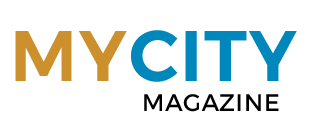When it comes to healthcare, “choice” can be seen as an odd word. Many of us grew up in an era that when your doctor ordered additional tests, you went where he or she told you to go to have them done. The focus was on choosing a good provider who could address treatment needs.
Welcome to a new era
Although choosing the right healthcare provider is still absolutely crucial, this is a new era. Rising insurance costs in the form of co-pays, co-insurance and deductibles have engendered “sticker shock” for many consumers. Insurance companies are demanding providers focus on patient outcomes, moving away from what is called the fee-for-service model, thus squeezing payouts to providers. In addition, there is pressure to make patients more aware and accountable for the healthcare dollars they spend. It is a tug-of-war between payer and payee, and consumers may feel caught between two titanic forces.
The answer? Taking control as a consumer. We are accustomed to shopping for the best deal for major purchases such as a car or residence. Consumers are willing to research, haggle, ask questions and push for a better deal in these cases. Now with significant requirements to meet co-pays and co-insurance before insurance pays for treatment, consumers are seeing the true costs involved. Somewhat, that is.
The issue: transparency
The medical industry is opaque regarding pricing for services. It is a legacy of a system wherein consumers became used to simply paying their monthly insurance premium, barely glancing at statements. Compare this with real estate, with its comp lists and appraisals, or automotive purchasing in which actual manufacturing costs are easily available in Kelly Blue Book and elsewhere.
Unlike cars and homes, costs for the same medical test can vary wildly from provider to provider. Costs are based on overhead, staff compensation, business needs, and the type of procedure. For example, the cash price for an MRI (magnetic resonance imaging scan) of the chest may be $2,000 at one provider and $400 at another – a 500% difference!
Savvy consumers looking to do more than just pay their co-pay and co-insurance need to take the time to research cash prices. Many providers offer cash-pay prices (known in industry parlance as “time-of-service fees”) that are significantly discounted from the standard fees they bill to an insurance company.
How to be savvy
Becoming a savvy consumer takes some work. Fortunately, more resources are appearing to empower consumers with pricing information. For example, newchoicehealth.com shows side-by-side comparisons of procedures with a price range, highlighting the least expensive provider. Others include healthcarebluebook.com and fairhealthconsumer.org, both of which show a single “fair price” estimate listed by zip code. Additionally, health insurance companies are starting to come on board with their own pricing tools. Finally, numerous articles, books and forums contain additional information about exam pricing.
It is important to note that paying for diagnostic services by insurance or cash is an either/or proposition. Knowing the details of an insurance plan and what it covers is crucial.
You have a choice where to spend your healthcare dollars. Do your homework, and shop around!








